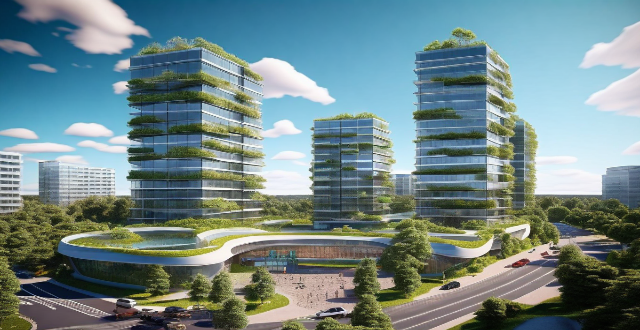Integrating climate-smart technologies into existing infrastructure is vital for building resilience and achieving a low-carbon future. The process involves assessment, planning, upgrading buildings with energy-efficient systems, integrating renewable energy sources, implementing smart grids, adopting water-efficient technologies, retrofitting sewage treatment plants, installing smart water meters, promoting public transportation, upgrading roads, implementing intelligent transport systems, encouraging green building practices, incorporating green roofs and walls, using eco-friendly materials, implementing waste-to-energy projects, promoting recycling, encouraging circular economy principles, adopting compact urban designs, preserving and restoring ecosystems, developing green corridors, establishing a robust monitoring system, and conducting regular evaluations. This collaborative effort from governments, private sectors, and communities ensures a successful transition towards sustainability.

How Can Climate-Smart Technologies Be Integrated into Existing Infrastructure?
Climate-smart technologies (CSTs) are innovative solutions designed to address the challenges posed by climate change. They aim to reduce greenhouse gas emissions, adapt to changing climate conditions, and promote sustainable development. Integrating these technologies into existing infrastructure is crucial for building resilience and ensuring a low-carbon future. Here's how it can be done:
Assessment and Planning
- Conduct a thorough assessment of the current infrastructure to identify areas where CSTs can be integrated effectively.
- Develop a comprehensive plan outlining the desired outcomes, potential challenges, and timelines for implementation.
Energy Efficiency and Renewable Energy
- Upgrade buildings with energy-efficient lighting, insulation, and heating, ventilation, and air conditioning (HVAC) systems.
- Integrate renewable energy sources such as solar panels, wind turbines, or geothermal systems into the energy mix.
- Implement smart grids to optimize energy distribution and incorporate electric vehicles into the transportation system.
Water Management
- Adopt water-efficient technologies like drip irrigation and rainwater harvesting systems.
- Retrofit sewage treatment plants with advanced treatment processes to reclaim and reuse wastewater.
- Install smart water meters to monitor and manage water usage effectively.
Transportation Infrastructure
- Promote public transportation and non-motorized modes of transport like cycling and walking paths.
- Upgrade roads with materials that reflect sunlight to reduce heat island effects and improve stormwater management.
- Implement intelligent transport systems (ITS) to manage traffic flow and reduce congestion.
Buildings and Construction
- Encourage green building practices through certification programs like LEED or Green Star.
- Incorporate green roofs and walls to improve insulation and air quality while providing additional green space.
- Use eco-friendly materials in construction that have lower embodied energy and are recyclable.
Waste Management
- Implement waste-to-energy projects to convert organic waste into usable energy forms.
- Promote recycling by setting up efficient collection and processing systems.
- Encourage circular economy principles by designing products for longevity, repairability, and recyclability.
Urban Planning and Land Use
- Adopt compact urban designs that minimize travel distances and maximize public space.
- Preserve and restore ecosystems within urban areas to enhance biodiversity and provide natural cooling effects.
- Develop green corridors connecting different parts of the city for seamless movement and improved air quality.
Monitoring and Evaluation
- Establish a robust monitoring system to track the performance of CSTs and make necessary adjustments over time.
- Conduct regular evaluations to measure progress towards sustainability goals and share best practices.
By integrating climate-smart technologies into existing infrastructure, cities can become more resilient, livable, and sustainable. It requires a collaborative effort from governments, private sectors, and communities to ensure a successful transition towards a low-carbon future.